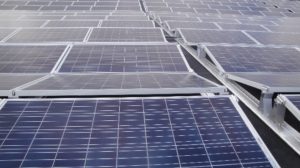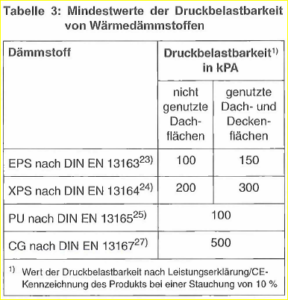 [1]Flat roofs are particularly well suited for the installation of a PV system – especially when a large PV system should be placed on the roof. More and more flat roofs are being equipped with PV systems; in the case of commercial business, they are usually for self-consumption. We have already discussed the installation of PV systems on flat roofs in part 4 of this blog series [2]. Today’s article is all about heat insulation on these roofs and what areas require special attention.
[1]Flat roofs are particularly well suited for the installation of a PV system – especially when a large PV system should be placed on the roof. More and more flat roofs are being equipped with PV systems; in the case of commercial business, they are usually for self-consumption. We have already discussed the installation of PV systems on flat roofs in part 4 of this blog series [2]. Today’s article is all about heat insulation on these roofs and what areas require special attention.
When installing a solar energy system on flat roofs, there are a wide range of conditions to deal with. Unfortunately, the roofs are not always on new buildings where it is still possible to influence the conditions. PV systems are often built on existing roofs and the load they are carrying changes fundamentally as a result of the construction. If the flat roof has heat insulation, the resilience of the insulation must be carefully examined beforehand. It can be assumed that the insulation in existing halls usually cannot take foot traffic and this means it has low compressive strength. If the load is too high, there is the risk of the roof cladding being damaged, which may result in leaks occurring in the roof.
Checking the compressive strength of insulation materials
When comparing the compressive strength of insulation materials, the focus must be, first and foremost, on the compressive stress. When it comes to determining the compressive stress, it is all about the compressive force which has to be applied to compress the insulation material by 10% (according to DIN EN 826).
 [3]
[3]The table below from the German flat roof guideline provides information on the compressive stress of rigid foam insulation materials. We would like to highlight the fact that all the specified values must not be used for planning permanent loads. A permanent load may cause subtle plastic deformations. According to the flat roof guideline, there is usually already a risk of damage to the roof cladding if the deformation exceeds 2%. We therefore recommend complying with this 2%. This will reduce the burden on the insulation material automatically and it will return to its original form.
The Industrieverband Polyurethan-Hartschaum e.V. [4] (IVPU) gives the following recommendation for the polyurethane rigid foam (PU) insulation material: 20% compressive strength should not be exceeded for the long-term load (own weight and ballast) in accordance with DIN EN 826. In the case of a dynamic load (own weight, ballast and snow), 60% of the value specified in the table should be adhered to.
Flat roofs are often equipped with mineral wool as heat insulation. Unfortunately, the Fachverband Mineralwolle-Industrie e.V. [5] does not provide any information on the compressive strength of these insulation materials. It is up to the individual to try and obtain information from the mineral wool manufacturer. However, this can also prove to be difficult. Only the manufacturer Rockwool [6] has previously released loads for the use of its different products which provide important planning information for the erection of a PV system on roofs with this insulation material. We are in permanent contact with other mineral wool manufacturers. The fact is that systems with a continuous ground rail are compatible with mineral wool, as they distribute the load evenly on the roof. Selective loads, on the other hand, are in most cases not authorised.
The IBC SOLAR solution
We have therefore developed “IBC AeroFix [7]” as our own product in close contact with industry associations and manufacturers of insulation systems. The 18 cm wide ground rail – this width is actually unique in the industry – exercises significantly less pressure on the heat insulation from systems with supports raised at selective points. “IBC AeroFix” is suitable for bitumen, foil, green and gravel roofs and also offers enough stability without a roof screw connection. The roof cladding does not get damaged and there is therefore no risk of water penetration.
We will be happy to advise you
If you want to equip a flat roof with heat insulation with a PV system and are not sure how to calculate the existing compressive stress, we will happy to help you. We will usually even find a customised solution to enable you to implement your PV system at critical locations (e.g. high snow loads). If you would like to contact us, please feel free to use the comment function. We will then get in touch with you immediately.